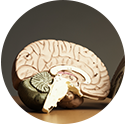Most people do not need to be told that plastics and chemicals in the environment present significant health risks to children. Just in the last few weeks numerous studies have been published that issue dire warnings about these environmental health risks.
This is just a small sampling of this new research:
Developing infants exposed to chemicals that disrupt their gut microbiome
- An international team of researchers lead by the Norwegian Institute of Public Health and the University of California San Diego, wrote in a February 2019 study: “Early disruption of the microbial community (by toxins) may influence life-long health. Environmental toxicants can contaminate breast milk and the developing infant gut microbiome is directly exposed.”(1)
Children exposed to neurotoxicants at higher risk for ADHD
- Another Norwegian study (2) with an April 2019 publication date finds that numerous chemical compounds can be classified as “neurotoxicants” (causing adverse effects in the central and peripheral nervous system), and infants are exposed to a mixture of these during the critical period of brain maturation. These chemicals are associated with increased risk of ADHD.
Childbearing mothers and fetus at risk for gestational diabetes mellitus and impaired glucose tolerance
In France, a March 2019 study (3) warned that, evidence is (accumulating) on the adverse health effects of toxic environmental exposures on the health of the fetus and the childbearing mothers. In this study researchers found that maternal exposure to lead, cadmium, and manganese lead to gestational diabetes mellitus and impaired glucose tolerance in diabetes-free mothers and presented risks to the fetus.
Children and cancer risk
In China, a March 2019 study (4) found increase risks of cancers for adults and children exposed to China’s rapid urbanization and modernization and increased exposures to phthalates from synthetic materials. “For 80% of working adults and 40%-75%% of children, their cancer risks exceeded the EPA’s (Environmental Protection Agency) benchmark.”
Environmental pollutants and child health—A review of recent concerns, provides information and evidence for the effects of a wide range of environmental contaminants
A recent paper entitled, Environmental pollutants and child health—A review of recent concerns, provides information and evidence for the effects of a wide range of environmental contaminants (air pollutants, heavy metals, organochlorine compounds, perfluoroalkyl substances (PFAs), polybrominated diphenyl ethers, pesticides, phthalates and bisphenol A) on child health outcomes, was published in the International journal of hygiene and environmental health.(5)
The review addressed effects on fetal growth and prematurity, neurodevelopment, respiratory and immune health, and childhood growth and obesity and the impact of various chemicals.
- The research team from Spain found good evidence that often even at lower chemical exposure levels, adverse effects were seen in fetal growth for air pollution and polychlorinated biphenyls (PCBs), for neurotoxic effects of lead, methylmercury, PCBs and organophosphate pesticides, and for respiratory health effects of air pollution.
- Moderate evidence has emerged for a potential role of environmental pollutants in attention deficit hyperactivity disorder and autism (lead, PCBs, air pollution), respiratory and immune health (dichlorodiphenyldichloroethylene – DDE – and PCBs), and obesity (DDE).
- In addition, there is now moderate evidence that certain chemicals of relatively recent concern may be associated with adverse child health outcomes, specifically perfluorooctanoate (carpeting, personal care products) and fetal growth, and polybrominated diphenyl ethers (flame retardant materials) and neurodevelopment.
Since most of the recent literature evaluates common exposures in the general population, and not particularly high exposure situations, this accumulating body of evidence suggests that the unborn and young child require more protection than is currently provided. Large, coordinated research efforts are needed to improve understanding of long-term effects of complex chemical mixtures.
What about your child?
At the Magaziner Center for Wellness, we begin our treatment of suspected health concerns in children by determining sensitivities to food and other common allergens. We also explore Detoxification – clearing toxins, including heavy metals, from the body or neutralizing or transforming them.
Proper detoxification helps with all endocrine function including regulation of mood, growth and development, and tissue function. The endocrine system influences almost every cell and organ of the body, so the elimination of toxins is integral to health and wellbeing.
At the Magaziner Center for Wellness, we utilize a number of in-office and at-home detoxification procedures to help our patients eliminate or prevent the buildup of harmful toxins that enter the bloodstream through poor diet or daily exposure to dangerous, but common, environmental pollutants.
1 Iszatt N, Janssen S, Lenters V, et al. Environmental toxicants in breast milk of Norwegian mothers and gut bacteria composition and metabolites in their infants at 1 month. Microbiome. 2019;7(1):34. Published 2019 Feb 27. doi:10.1186/s40168-019-0645-2
2. Lenters V, Iszatt N, Forns J, Čechová E, Kočan A, Legler J, Leonards P, Stigum H, Eggesbø M. Early-life exposure to persistent organic pollutants (OCPs, PBDEs, PCBs, PFASs) and attention-deficit/hyperactivity disorder: A multi-pollutant analysis of a Norwegian birth cohort. Environment international. 2019 Apr 1;125:33-42.
3. Soomro MH, Baiz N, Huel G, Yazbeck C, Botton J, Heude B, Bornehag CG, Annesi-Maesano I, EDEN mother-child cohort study group. Exposure to heavy metals during pregnancy related to gestational diabetes mellitus in diabetes-free mothers. Science of the Total Environment. 2019 Mar 15;656:870-6.
4. Bu Z, Mmereki D, Wang J, Dong C. Exposure to commonly-used phthalates and the associated health risks in indoor environment of urban China. Science of The Total Environment. 2019 Mar 25;658:843-53.





































Recent Comments